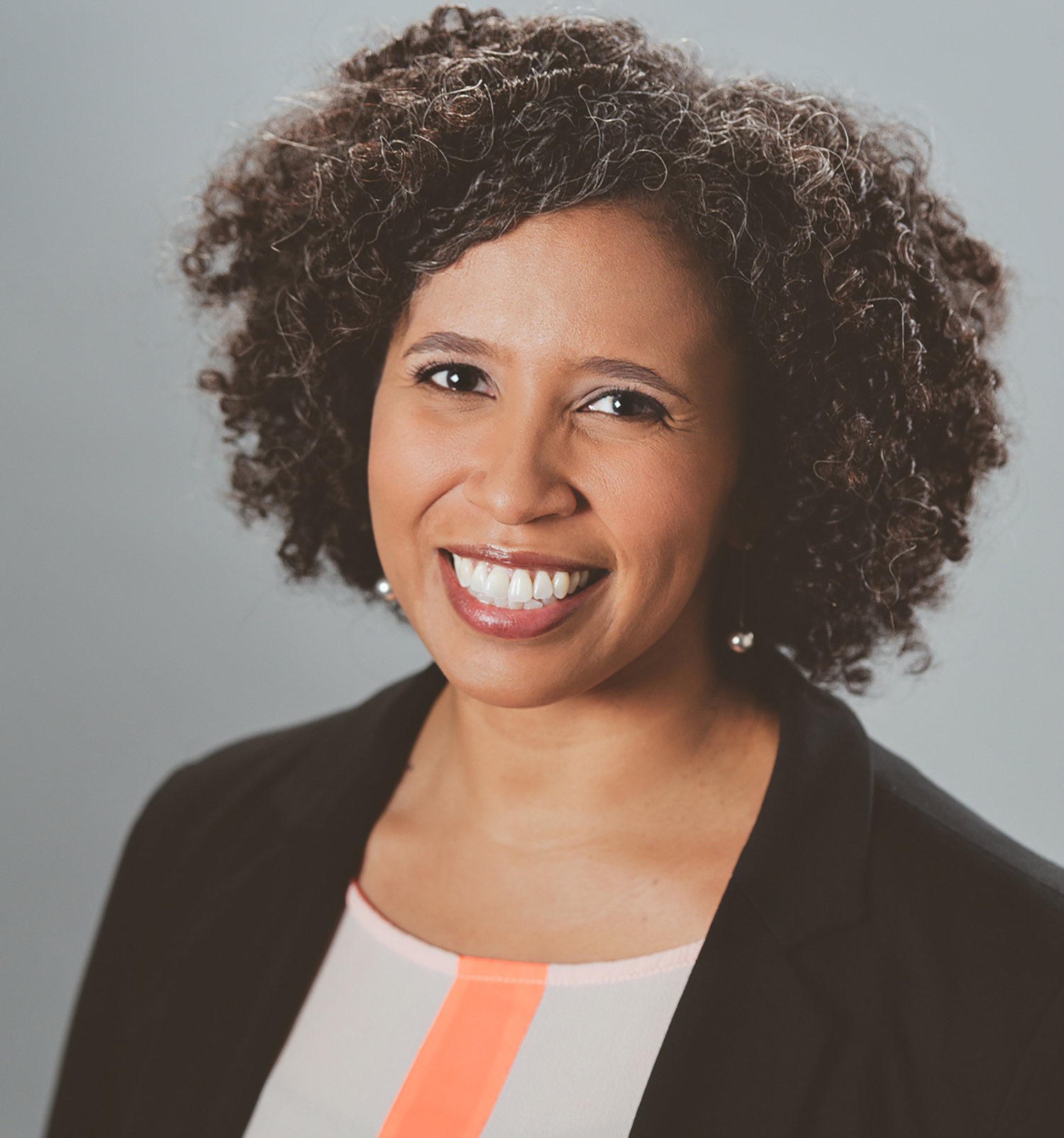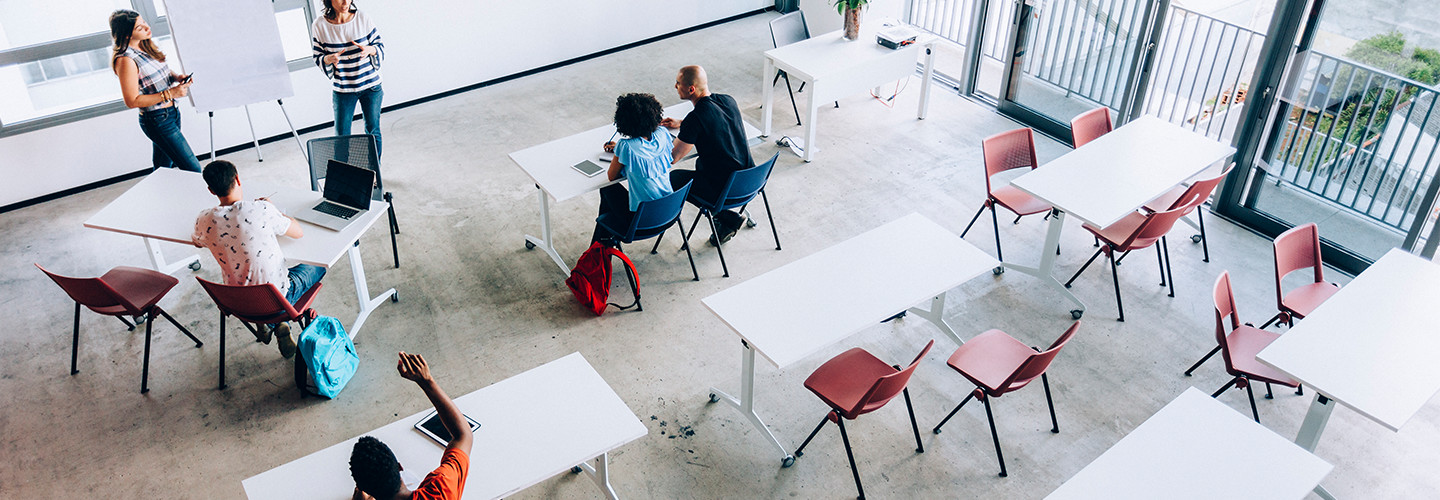Q&A: Laura Lucas Explains What Goes into Modern Classroom Design
While the concept of reshaping the classroom to enhance the quality of education has taken hold in K–12 schools, higher education institutions have been slower to adapt.
However, as the landscape of higher education shifts, universities are beginning to take the idea of modern learning environments more seriously.
At St. Edward’s University in Texas, administrators wanted to bring in an expert on learning spaces. They hired Laura Lucas to be the university’s learning spaces manager — a new role not only for St. Edwards, but for the higher education sphere.

Photo: Sherry Hammonds
Laura Lucas, Learning Spaces Manager at St. Edward's University
Lucas sat down with EdTech Magazine to discuss what her position entails and how modern learning environments are changing higher education.
EDTECH: What is a learning spaces manager?
Lucas: I often speak of this position as having two sides to it. One side focuses on analyzing the learning spaces that we currently have, what are the features that we have, what are the technology installations that we have, and ensuring that we can match faculty needs to what we currently have on campus, working with faculty to kind of use those features to the best of their ability.
The other side of it is to be kind of forward thinking and to keep my eyes on what trends are in higher ed. This means asking what are the advancements that we see in technology, in space design, in furniture, and thinking about how that aligns to the styles of teaching and learning that our schools are engaging in here on campus.
From there, I work to help ensure that our spaces, both formal informal, are actually in alignment to the methods of teaching and learning that our faculty are engaging in.
EDTECH: What goes into designing and implementing a modern classroom?
Lucas: When redesigning a space — whether something formal like a classroom or more informal, like a computer lab — an important first step is to engage end users. Ask questions like, “What are the things that you really need this space to do for you?” Thinking of a typical classroom space or computer lab, what is it that you like about the spaces that are currently available? What are the things we could do better?
A lot of times, I won't even talk about the technology or the furniture. But say, "in your perfect world where you were not confined to any space at all, how would you want to teach this content to your students?" Then I try to work backwards from there.
After we have our feedback, our learning spaces team meets to work out the details. This is a matrix team with representation from all our different IT groups. We have members from our digital infrastructure, user services and classroom media, and instructional technology teams, and we try to unpack the feedback that we get from our users.
We identify what are some common themes or common needs people have expressed, and then mine our combined expertise to determine what are some ways that we can go about addressing these needs. After we figure that out, we go to the market and find the products that best fit those needs.
EDTECH: How do you evaluate the effectiveness of a space once it has been redesigned?
Lucas: It’s a really interesting question, and one I have discussed with my peers who work in the spaces world as well. There's a real challenge in trying to assess the impact of a space redesign because it's hard to isolate the impact of our work versus the impact from the style of teaching and learning that kind of comes along with that redesign.
Our approach is by following up with users about the new space — questions like how well the new space meets their needs, what new opportunities they found since the redesign and what new challenges they may have.
We also compare how the room is used after the redesign compared to before. For example, after a computer lab refresh we did last year, we were able to analyze all of our lab statistics to show a pretty significant increase in student usage of that computer lab following the redesign. We were actually able to pull data from our Wi-Fi access points to show there had been an increase Wi-Fi traffic in the lab, suggesting additional users in the space.
EDTECH: What have you found to be the best way to educate professors who are uncomfortable with new technology?
Lucas: A big part is meeting people where they are. We’re big fans of pilot projects at Saint Edward’s, so we really try and get users to test technology, test different configurations and test different furniture before we try and scale.
For these projects, one of which we’re running right now involving wireless projection, we have faculty partners who are excited to use the technology, and they analyze the impact of these tools. After we have the technology installed and some information from our willing partners, we reach out to more hesitant faculty members and let them know the tech is available in classrooms they have access to.
For those that are interested, we run training programs. While we try to do group trainings as much as possible to save time, I usually offer to do one-on-one sessions if they prefer. My role is to provide context for new technology and ideas for how to use it in the classroom in order to make professors comfortable and confident enough to incorporate these amazing tools in their lesson plans.
EDTECH: Looking ahead, where do you see the future of learning-space design going?
Lucas: Right now, wireless projection and video conferencing are two big things that seem to be getting a lot of attention on our campus.
One of our most recent initiatives has been developing what we call global digital classrooms. These spaces are equipped with technology to support high-definition video conferencing. Now we have installed cameras and microphones in all of our classrooms across campus so that, in any location, you have really easy access to video conferencing and lecture capture.
When you think bigger picture, absolutely we’re thinking about virtual reality installations within classrooms and how we can consider integrating those extended reality experiences. We are also exploring the idea of using smart devices, like Google Home, so faculty can use voice-activated commands for classroom technology when they are in the space.
EDTECH: What advice would you give universities starting to plan a learning space redesign?
Lucas: I would say one of the most important things to remember is to talk with users about what it is they are looking for in a learning space. Having an exchange with faculty and students is critical, because you do not want to be spending time and money redesigning a space just because it is a trend or because you see other people doing it. Successful redesigns are ones that connect to what users are actually trying to do in the classroom and support a deeper level of learning.
It is also important to understand that modern classrooms are not a trend and do not have to be equipped with the latest and greatest technology to be successful.
A redesign can be fully gutting a classroom and installing all new furniture and state-of-the-art tech, but it can also be adding mobile whiteboards or simply rearranging furniture to create a more open, collaborative space.
There is a broad range of learning-space initiatives, and I would hope institutions are not passing up the opportunity to give students and faculty the best education environment possible because they are scared by a potential price tag.








